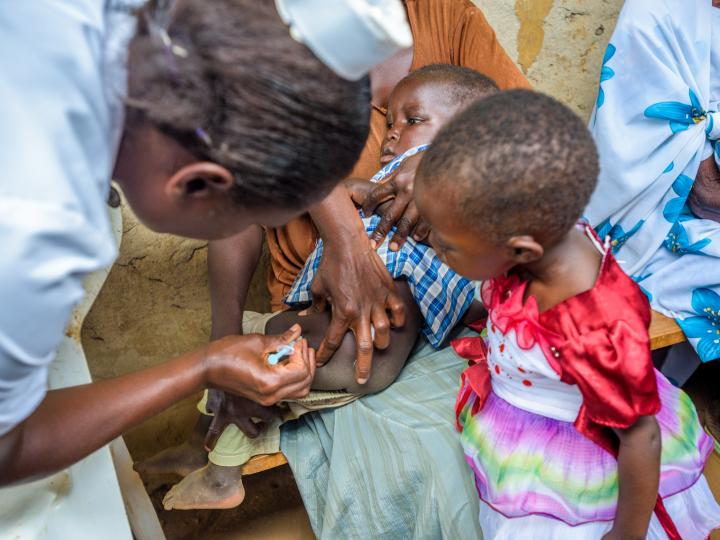
Addressing Anaemia
Iron Supplementation for Pregnant Mothers
Importance of Iron
Iron deficiency is the most common micronutrient deficiency, affecting millions of women and children worldwide. Severe iron deficiency manifests as anaemia, which affects cognitive and immune function and causes fatigue, reducing productivity. Pregnant women who have iron-deficiency anaemia are more likely to have poor birth outcomes. Learn how to assess anaemia prevalence with the Nutrition Centre of Expertise’s Anaemia Assessment Guideline.
The best way to prevent iron-deficiency anaemia is to ensure that all women are iron replete, through adequate diet, during their reproductive years. When this does not happen, pregnant women should be targeted first for iron/folate supplementation. Folate helps to produce and maintain new cells in the body and is important in preventing anaemia. Most national ministries of health include iron/folate supplementation as part of routine antenatal care. World Vision supports this, as outlined in our Antenatal Iron-Folic Acid Supplementation guideline. Supplementation should start as early as possible and continue throughout pregnancy.
Cost of Programming
The overall annual cost per capita for iron supplementation activities in MICAH programmes that targeted both women and children ranged from $0.08 to $1.50. Countries that achieved the highest coverage spent between $0.40 and $1.50 per capita per year.
Adequate Iron for Young Children
Adequate iron for children means that each child consumes enough iron to meet his or her physiological needs, which are high for young children due to rapid growth. It is very challenging to meet the iron needs of young children without fortified foods, which is why iron deficiency anaemia is so common around the world. Anaemia in early life affects cognitive development and overall health, and thus it is a priority to ensure the iron needs of young children are met. Learn how to assess anaemia prevalence with the NCOE's Anaemia Assessment Guideline.
Adequate iron intake is usually achieved through a combination of iron from dietary sources as well as from supplements, such as syrup or tablets, or through fortification either through home-based methods (eg. micronutrient powders) or a commercially prepared food specially designed for infants and young children. The decision to address iron deficiency in a population through mass supplementation must be made in consideration of the prevalence of infectious disease and malaria. Learn more in the NCOE's Guideline on Iron Supplementation in Malaria-endemic Areas.
Home-based Fortification
Home-based fortification is a vital strategy for children under two years living in areas where fortified complementary foods are not available or affordable. During the most critical period of growth and development (6 to 24 months), home-based fortification provides those micronutrients in small packets that a caregiver can use each day to enrich the child’s porridge or other food. Specially formulated to meet a young child’s micronutrient requirements for that day, use of these packets helps reduce the prevalence of iron deficiency anaemia and/or prevent nutritional deficiencies.
